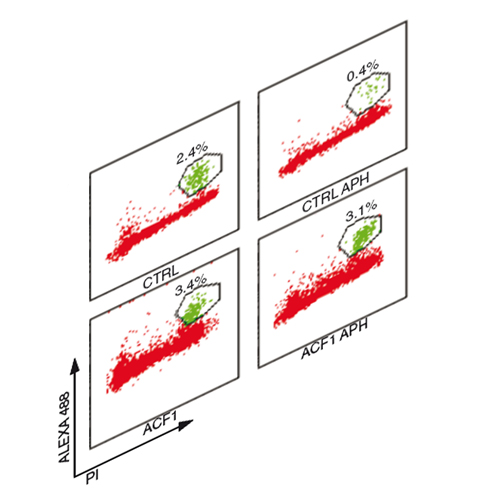Role for hACF1 in the G2/M damage checkpoint
11-Jul-2011
Nucleic Acids Research, 2011, doi: 10.1093/nar/gkr435, pp. 1-12 published on 11.07.2011
Nucleic Acids Research, online article
Nucleic Acids Research, online article
Active chromatin remodelling is integral to the DNA damage response in eukaryotes, as damage sensors, signalling molecules and repair enzymes gain access to lesions. A variety of nucleosome remodel- ling complexes is known to promote different stages of DNA repair. The nucleosome sliding factors CHRAC/ACF of Drosophila are involved in chromatin organization during development. Involvement of corresponding hACF1-containing mammalian nucleosome sliding factors in replication, transcription and very recently also non-homologous end-joining of DNA breaks have been suggested. We now found that hACF1-containing factors are more generally involved in the DNA damage response. hACF1 depletion increases apoptosis, sensitivity to radiation and compromises the G2/M arrest that is activated in response to UV- and X-rays. In the absence of hACF1, cH2AX and CHK2ph signals are diminished. hACF1 and its ATPase partner SNF2H rapidly accu- mulate at sites of laser-induced DNA damage. hACF1 is also required for a tight checkpoint that is induced upon replication fork collapse. ACF1- depleted cells that are challenged with aphidicolin enter mitosis despite persistence of lesions and accumulate breaks in metaphase chromosomes. hACF1-containing remodellers emerge as global facilitators of the cellular response to a variety of different types of DNA damage.











